The History of Video Games #3: The Sinclair ZX Spectrum - Part One
The Dawn of the 'Speccy'
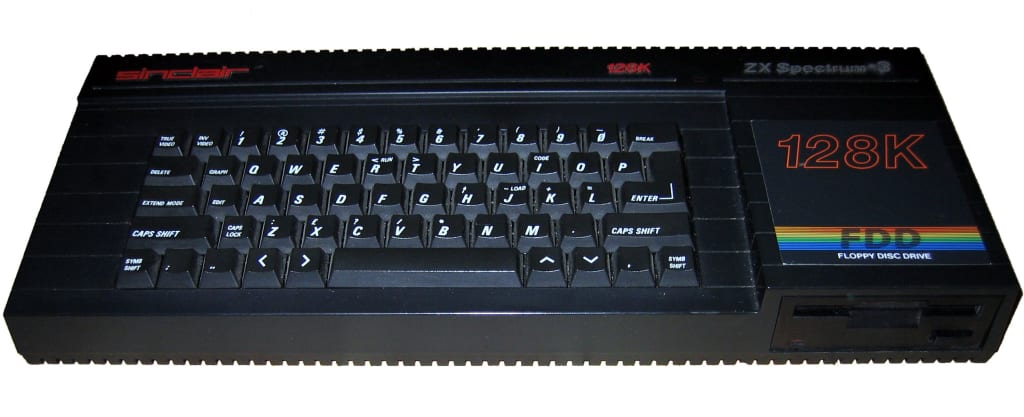
In the last article we covered the great video game crash of 1983, which led to the demise of the Atari 2600. This led some to believe that video games were simply a passing fad.
At least in America.
In the UK, the situation was quite different. Here the video game crash did not have anywhere near as big an impact. Here the demise of the Atari coincided with the rise of the 8-bit home computer. UK gamers simply ‘traded up’ to a newer system and carried on gaming.
For many this newer system was the Sinclair ZX Spectrum, or one of its descendants. This British designed computer family was intended as the first home computer for the masses. It became very popular, and many affectionately referred to it as "The Speccy."
The first iteration was released in 1982 and was made famous for its rubber keyboard.
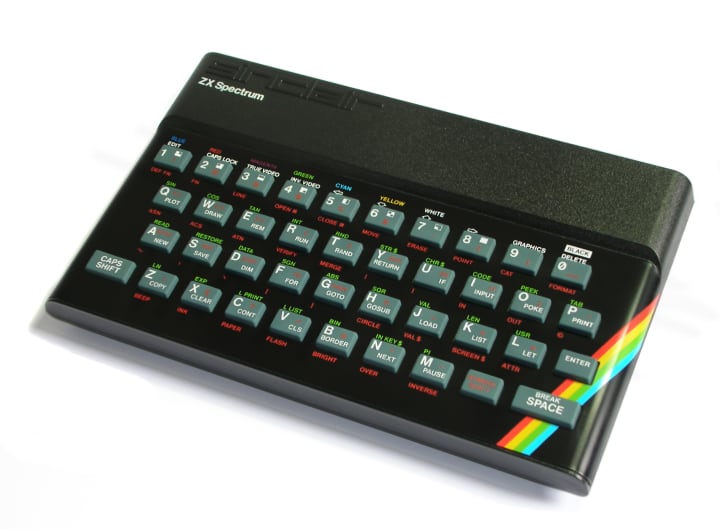
Thankfully the rubber keys were abandoned in later models.
Two versions of this were released, to suit different budgets. The entry level version offered 16 kilobytes of memory whilst the high end model boasted a full 48 kilobytes. This may sound minuscule compared to the multi Gigabyte systems of today, but it was a significant increase over what had been available before.
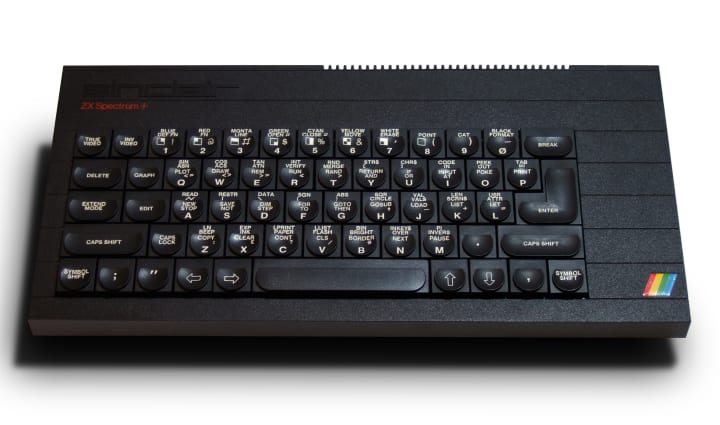
Now with a properly placed spacer bar, and no rubber keys.
Later iterations such as the ZX Spectrum 128 would increase this to 128 kilobytes of memory. This increased memory allowed for significantly more complex games, and for whole genres of games that would not have been possible on earlier systems.

128K of memory, that's more like it! Still no integral media drive though...
The physical media had far greater capacity as well. The two main formats were audio cassettes and 3 inch floppy discs. The discs had the advantage of near instantaneous and silent loading, but were more expensive. If memory serves, most disc based games retailed at around £14.99, whilst the more affordable cassettes sold for £9.99. Note this was 1980s money.
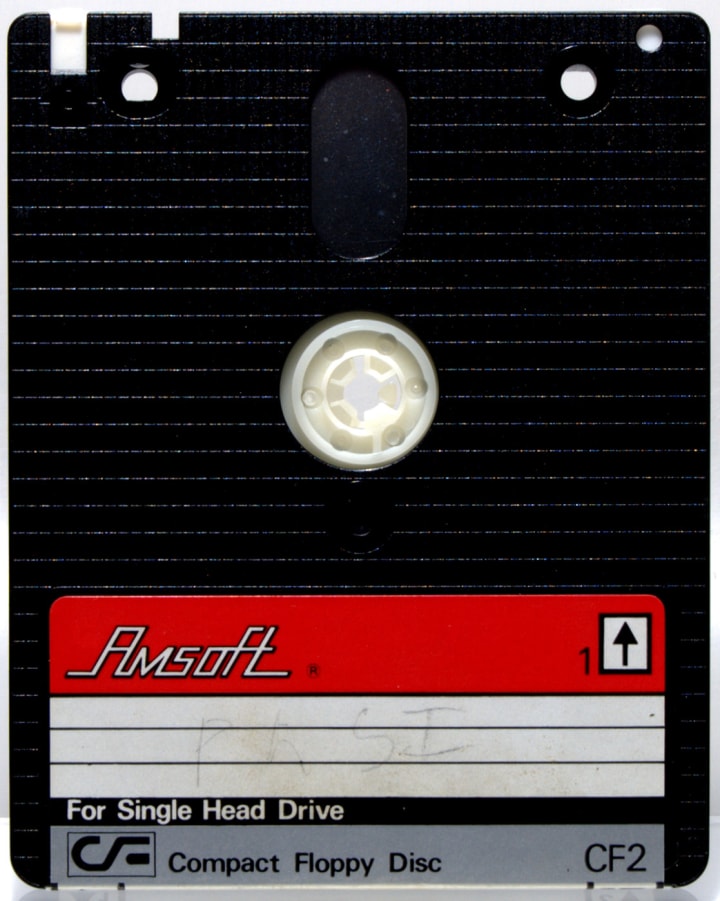
The 'high end' option. And before you ask, no they were not actually floppy.

The 'budget' option.
Early variants lacked either a built in cassette deck or disc drive, but it was simple enough to plug in an external one.

Such as this...
Later variants of the spectrum 128, such as the +2 came with an in built cassette deck, while the more expensive +3 came with an in built disc drive. Both could still accept external decks and drives, which provided users the flexibility of using either media.
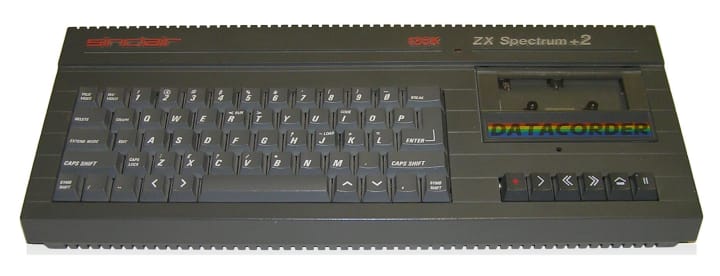
That's better...
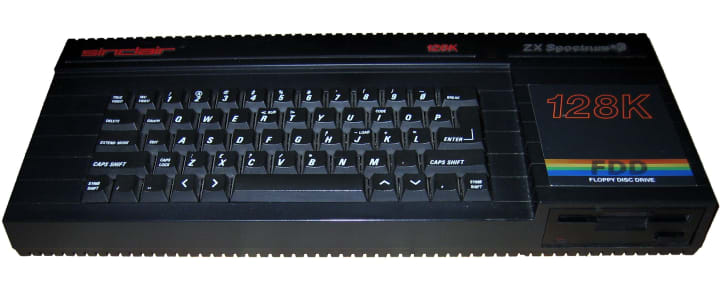
The highest end 'Speccy'.
Cassettes could take a long time to load, easily ten minutes or more. Whilst this was going on you were subjected to the audio visual assaults that were the spectrum loading screens.
If you would like to see and hear what I’m talking about, watch this, with the volume up. But don’t say I didn’t warn you...
Video by tehvalli
The very worst thing about games on cassette tapes was Multi-Load. This was a euphemism for having to stop the tape once a level was loaded, then having to restart it to load the next one, subjecting your eyes and ears to yet more torture.
This meant that it could take five minutes or more before you could start the next level. This would definitely break any ‘flow state’ you may have been in at the time, and made for a generally less than stellar experience.
If you died and had to start from level one all over again, this would mean having to rewind the tape to the part that encoded said level, and load again. If the game was one where you could move forwards and backwards between levels, this would mean having to do this for every single level change.
Video from RZX Archive
This would be made more bearable if the cassette inlay had instructions as to which number on the tape counter encoded each level. Unfortunately many did not. Cue trial and error and scribbling down the results with a Biro.
The multi-load problem was so bad that it spawned playground urban legends. One rumour stated that if you were playing Street Fighter II, not only would you need to load every level, but you would need to load every time you threw a fireball as well. Thankfully this was not the case, as we can see below.
Video by Zeusdaz - The Unemulated Retro Game Channel
The rumours about cassette tapes being vulnerable to damage, and cassette decks chewing them up were undoubtedly true however. I had first hand experience on a number of occasions. These cassettes were the same as audio cassettes, so if you ever remember your old Sony Walkman chewing up your favourite mix tape, you will know what I mean.

If you were alive in the '80s, you would have seen this. A lot...
Speaking of mix tapes, it was not unusual for some cassettes to contain multiple games on them. You can guess what you would need to do if the game you wanted to play was at the end of the cassette. Yep, fast forward until you reached it, just like fast forwarding to the track on your mix tape you want to hear. At least your mix tape would sound better than the spectrum's loading screen. (Unless you like industrial metal, in which case it sounds pretty much the same.)
One advantage of tapes however was that they were far less expensive to manufacture. As a result, magazines such as Crash and Sinclair User placed tapes on their front covers. These Cover Tapes would often contain demos of upcoming releases, small home-brew games, utilities and pokes.
"Pokes" were loadable cheat codes and simple modifications made by the community of amateur spectrum programmers. These pokes could make a game easier, more difficult or simply play differently. Poking could be seen as the beginnings of the modern day "modding scene." Those Skyrim and GTA V mods you see today can probably trace their ancestry back to the poking days.
Homebrew games were essentially the indie games of the time, created by small amateur teams, or more often than not, one person alone. The term bedroom programmer became synonymous with this. Due to the Spectrum being a computer, and therefore far more "open" than consoles, this scene became very large in the UK, with diehard fans still programming things for it today!
Thats all for now. Next time we will look at the audio-visual capabilities of the ‘speccy,’ the peripherals that were developed for it and of course, what gaming on a Spectrum was like.
See you all then..
About the Creator
Iain Baker
A 'pushing 40' life long gamer, reader, writer, film buff and amateur war historian. Loud and proud member of the 'The Oregon Trail Generation - the first gamer generation.'






Comments
There are no comments for this story
Be the first to respond and start the conversation.